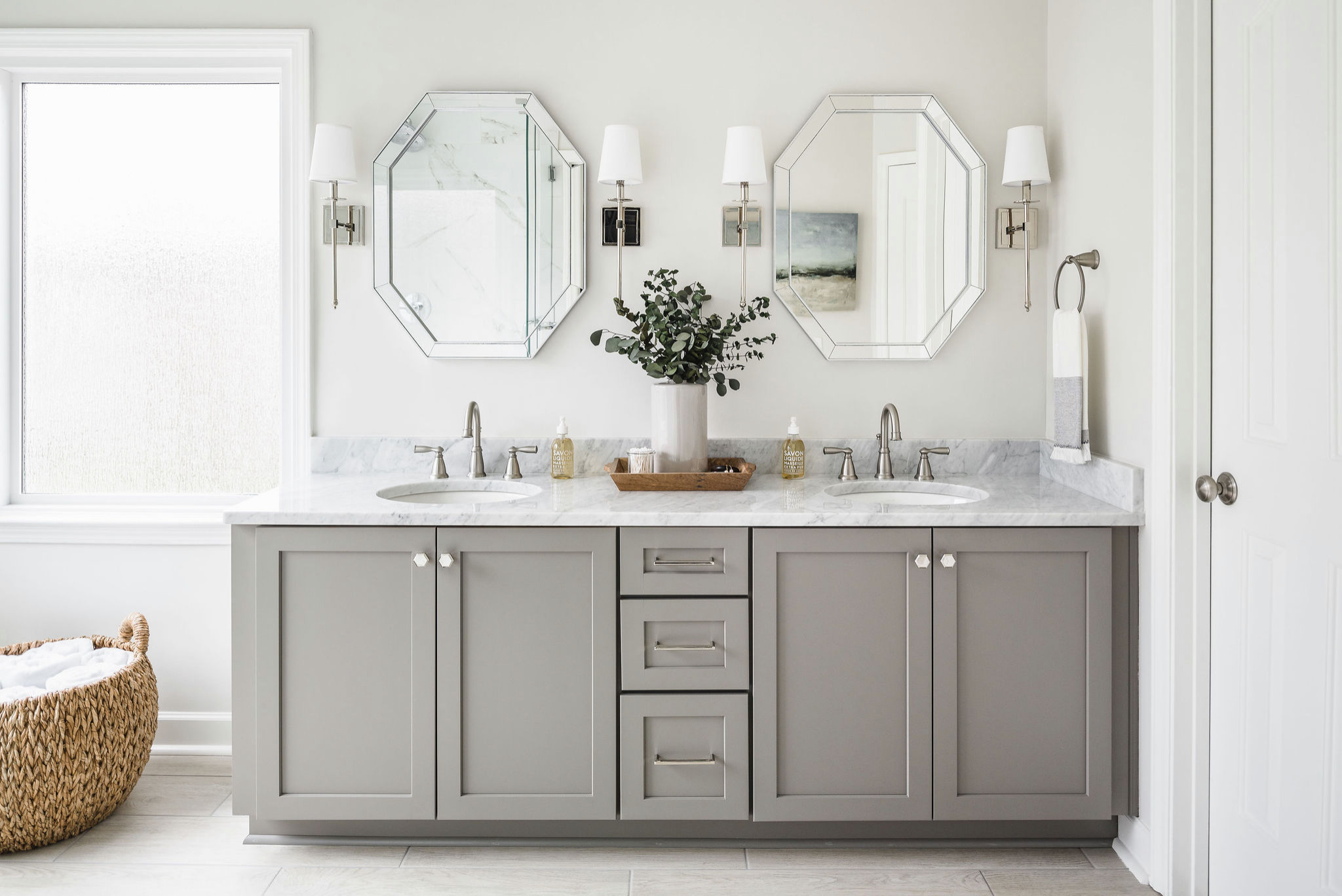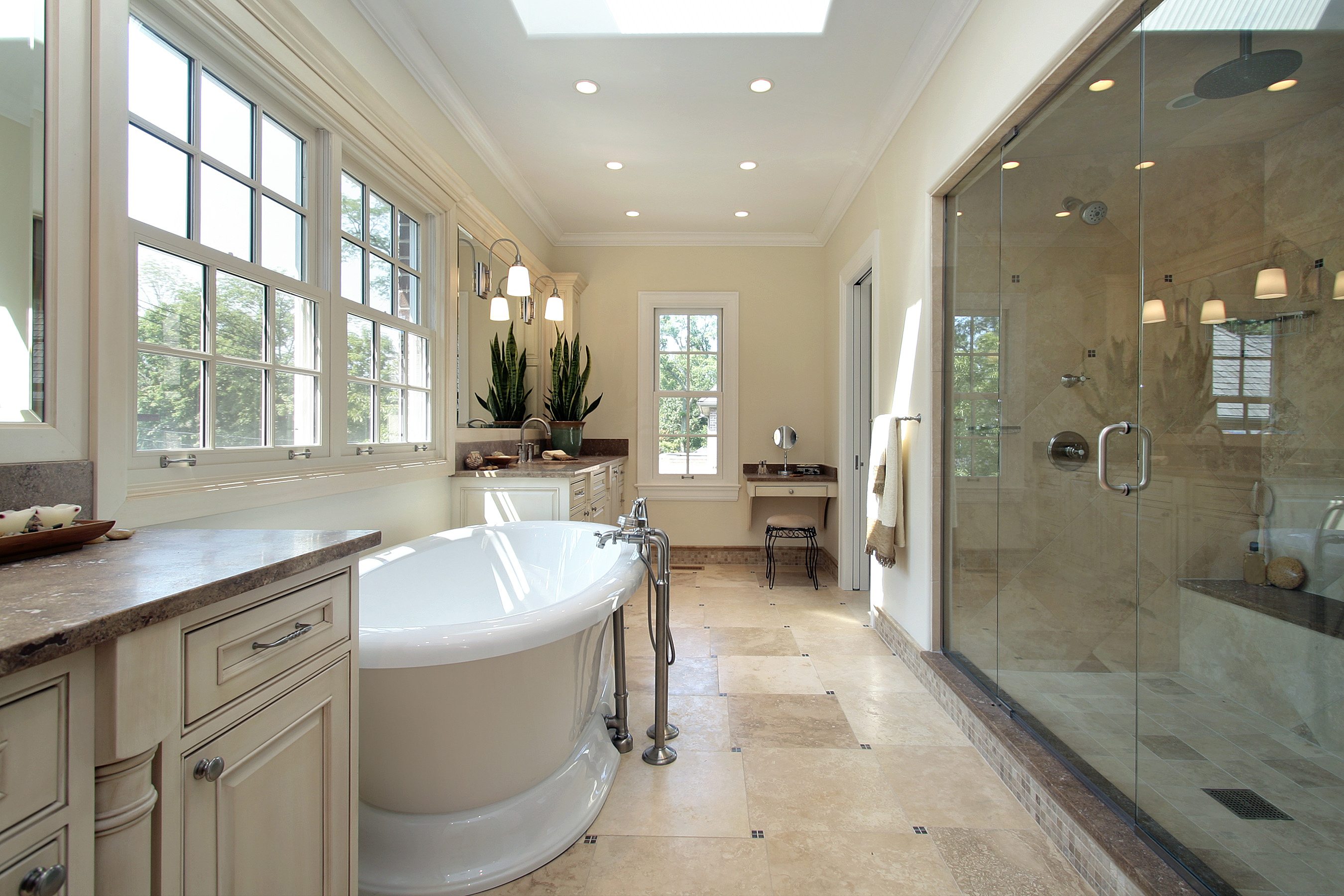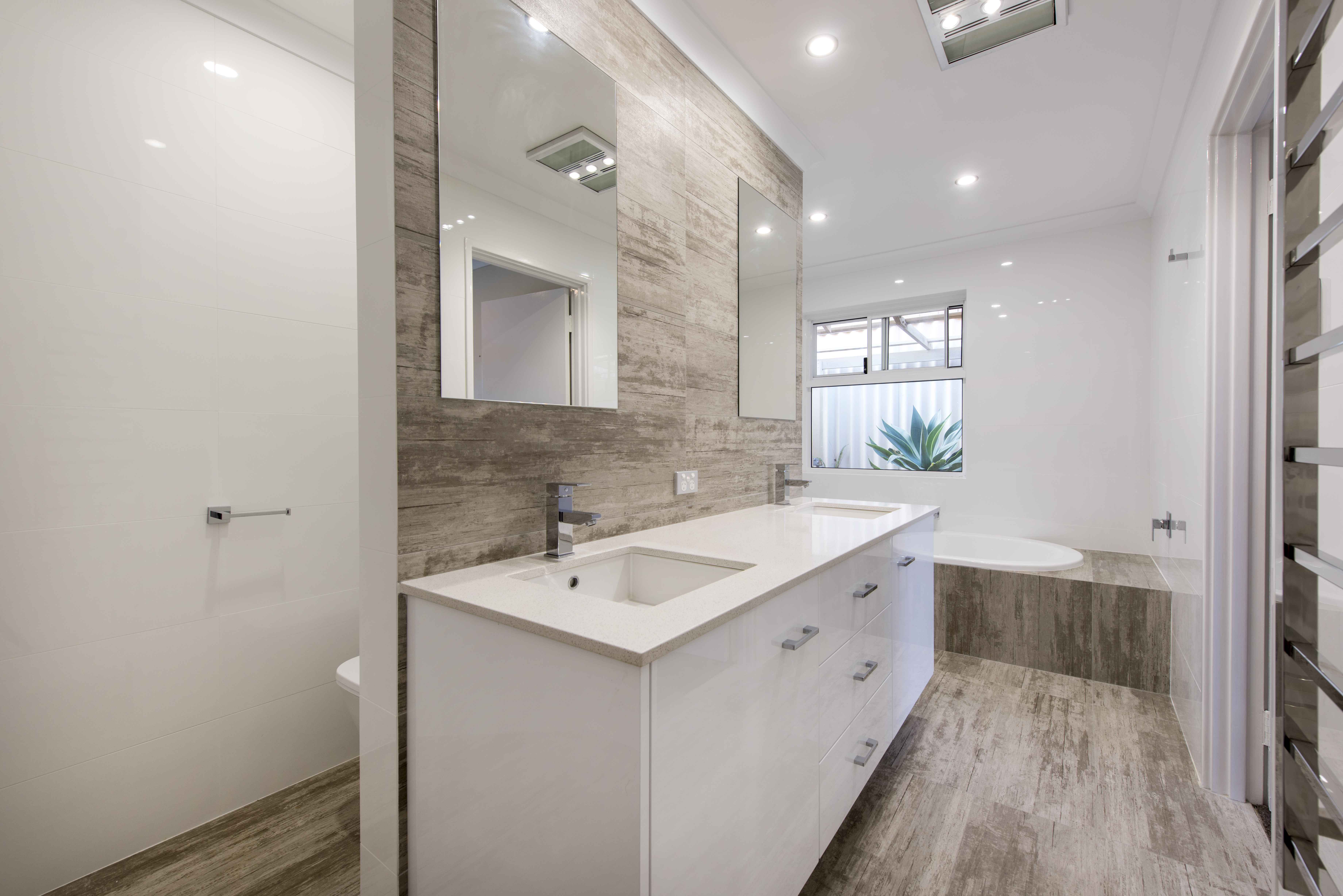Maximizing Space and Functionality

Transforming your bathroom into a sanctuary of relaxation and efficiency is achievable with clever design strategies. By maximizing space and functionality, you can create a bathroom that not only looks great but also meets your everyday needs.
Creating a Spa-Like Bathroom, Long bathroom remodel ideas
A spa-like bathroom evokes feelings of tranquility and rejuvenation. To achieve this ambiance, consider incorporating features like a soaking tub, rainfall showerhead, and heated floors.
- A deep soaking tub provides a luxurious escape, allowing you to unwind and de-stress after a long day. Choose a tub with a comfortable size and ergonomic design for optimal relaxation.
- A rainfall showerhead creates a cascading shower experience, mimicking the sensation of a gentle rain shower. It adds a touch of luxury and enhances the overall spa-like feel.
- Heated floors provide warmth and comfort, especially during colder months. They add a touch of luxury and enhance the overall spa-like experience.
Clever Storage Solutions for Small Bathrooms
Small bathrooms often present storage challenges. However, with creative solutions, you can maximize every inch of space.
- Built-in shelves offer a practical and aesthetically pleasing way to organize toiletries, towels, and other bathroom essentials. They can be customized to fit your specific needs and preferences.
- Cabinets provide ample storage for larger items, such as cleaning supplies, extra towels, and linens. Consider incorporating cabinets with adjustable shelves for versatility.
- Vanities with drawers offer convenient storage for smaller items like makeup, brushes, and hair styling tools. Choose vanities with deep drawers to maximize storage capacity.
Optimizing Space for Multiple Users
For multi-person households, bathroom layout is crucial for ensuring efficient and comfortable use. Consider incorporating features like double sinks and separate shower and toilet areas.
- Double sinks eliminate morning rush hour bottlenecks, allowing multiple users to get ready simultaneously. Choose sinks with ample counter space for toiletries and personal items.
- Separating the shower and toilet area creates a more spacious and private experience for each user. This layout is particularly beneficial in larger bathrooms.
Modern and Stylish Designs: Long Bathroom Remodel Ideas

Transforming your bathroom into a haven of modern elegance requires embracing the latest design trends. Minimalist aesthetics, natural materials, and geometric patterns are key elements in achieving a contemporary and sophisticated look. This section will explore how to incorporate these trends and smart technology to create a bathroom that is both stylish and functional.
Minimalist Aesthetics
Minimalist design focuses on simplicity and functionality. Clean lines, neutral color palettes, and a focus on essential elements create a sense of calm and spaciousness.
- Open Showers: Open showers without doors or enclosures create a sense of openness and spaciousness, particularly in smaller bathrooms.
- Floating Vanities: Floating vanities create a minimalist look while maximizing floor space.
- Integrated Storage: Built-in storage solutions, such as recessed shelves and drawers, help to keep clutter at bay.
Natural Materials
Natural materials, such as wood, stone, and bamboo, bring warmth and texture to a modern bathroom.
- Wood Flooring: Wood flooring adds warmth and a touch of nature to a modern bathroom. Consider using sustainable hardwoods or bamboo for a more eco-friendly option.
- Stone Countertops: Stone countertops, such as granite or marble, provide a luxurious and timeless look. For a more budget-friendly option, consider using engineered stone.
- Bamboo Accents: Bamboo can be incorporated into various elements, such as shower curtains, shelving, or decorative accessories, adding a touch of natural elegance.
Geometric Patterns
Geometric patterns, such as stripes, chevrons, and hexagons, add visual interest and sophistication to a modern bathroom.
- Tile Patterns: Geometric tile patterns can be used on floors, walls, or even shower enclosures to create a visually appealing and modern look. Consider using large format tiles for a minimalist effect.
- Textile Patterns: Geometric patterns can also be incorporated into towels, rugs, and shower curtains. Choose a neutral color palette and add pops of color with patterned accents.
- Lighting Fixtures: Geometric lighting fixtures, such as pendant lights with geometric shapes or linear sconces, can add a touch of modern sophistication.
Smart Technology
Integrating smart technology into your bathroom remodel can enhance functionality and convenience.
- Voice-Activated Lighting: Smart lighting systems allow you to control your bathroom lighting with voice commands, making it easier to adjust the ambiance and create the perfect mood.
- Smart Mirrors: Smart mirrors combine the functionality of a traditional mirror with features like touch-screen controls, built-in speakers, and even a digital clock. They can be used to play music, watch videos, or even check the weather forecast.
- Smart Shower Systems: Smart shower systems allow you to pre-set water temperature and flow rate, ensuring a comfortable and efficient shower experience.
Practical Considerations and Budget

A bathroom remodel can be a significant investment, but it’s an opportunity to enhance your home’s value and create a luxurious sanctuary. Planning a successful remodel involves a careful balance of design vision, practical considerations, and a realistic budget. This section will guide you through the key steps, providing insights into cost factors and ways to maximize efficiency.
Planning and Budgeting
Planning is crucial for a successful bathroom remodel. This involves defining your needs, creating a detailed design plan, and setting a realistic budget. Here’s a breakdown of the essential steps:
- Define your goals: Determine the scope of your remodel, including desired features, functionality, and aesthetic preferences. Consider factors like accessibility, storage needs, and desired ambiance.
- Create a detailed design plan: Work with a designer or architect to develop a detailed plan, including layout, fixtures, materials, and finishes. This plan will serve as a blueprint for the remodel and help you accurately estimate costs.
- Research and compare costs: Obtain quotes from multiple contractors and compare their pricing for labor, materials, and permits. Research different materials and fixtures to understand their cost variations and long-term benefits.
- Set a realistic budget: Allocate funds for each aspect of the remodel, including demolition, plumbing, electrical, fixtures, materials, and labor. Consider contingencies for unexpected costs or changes in scope.
